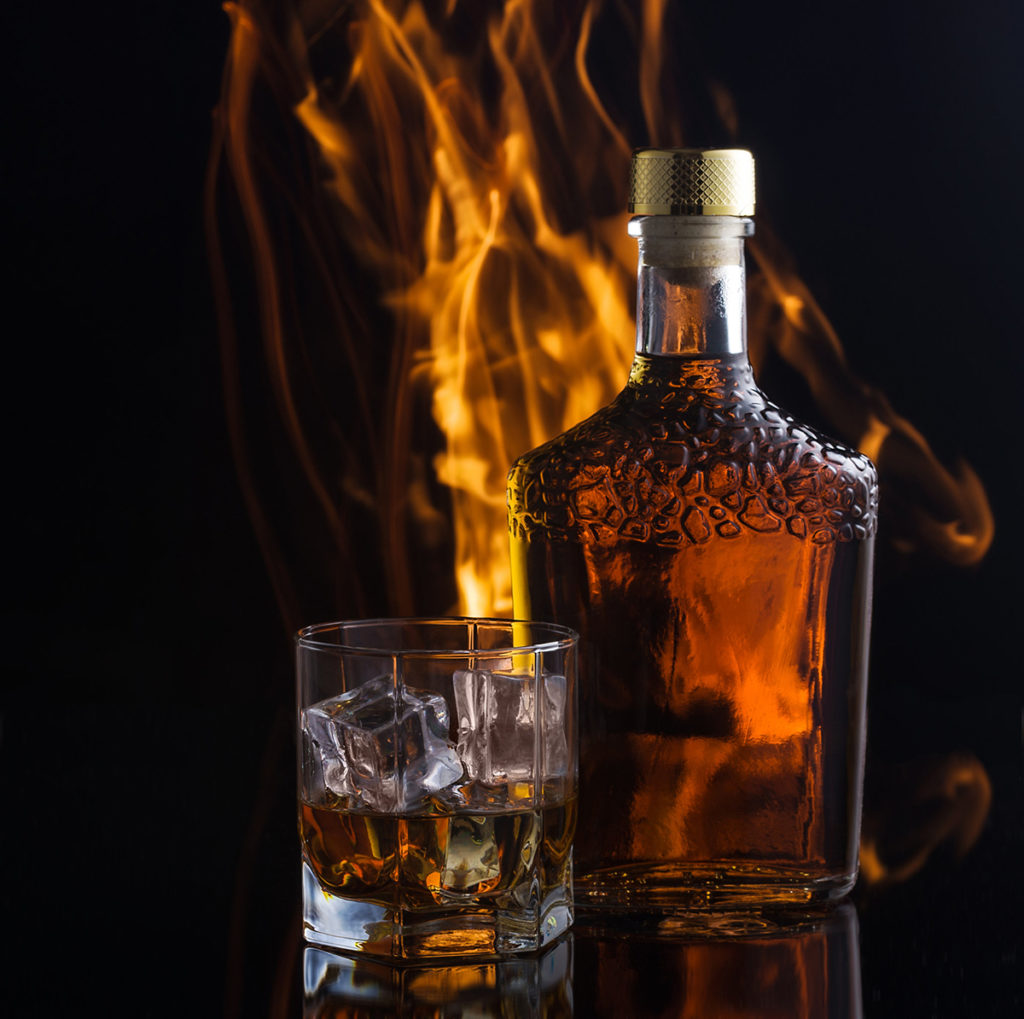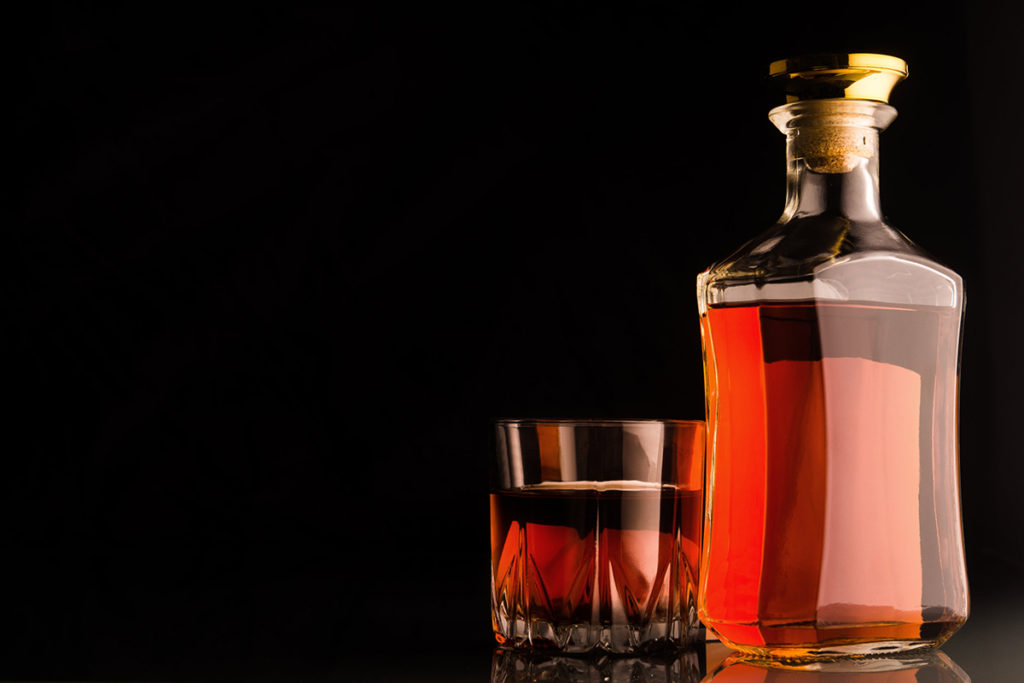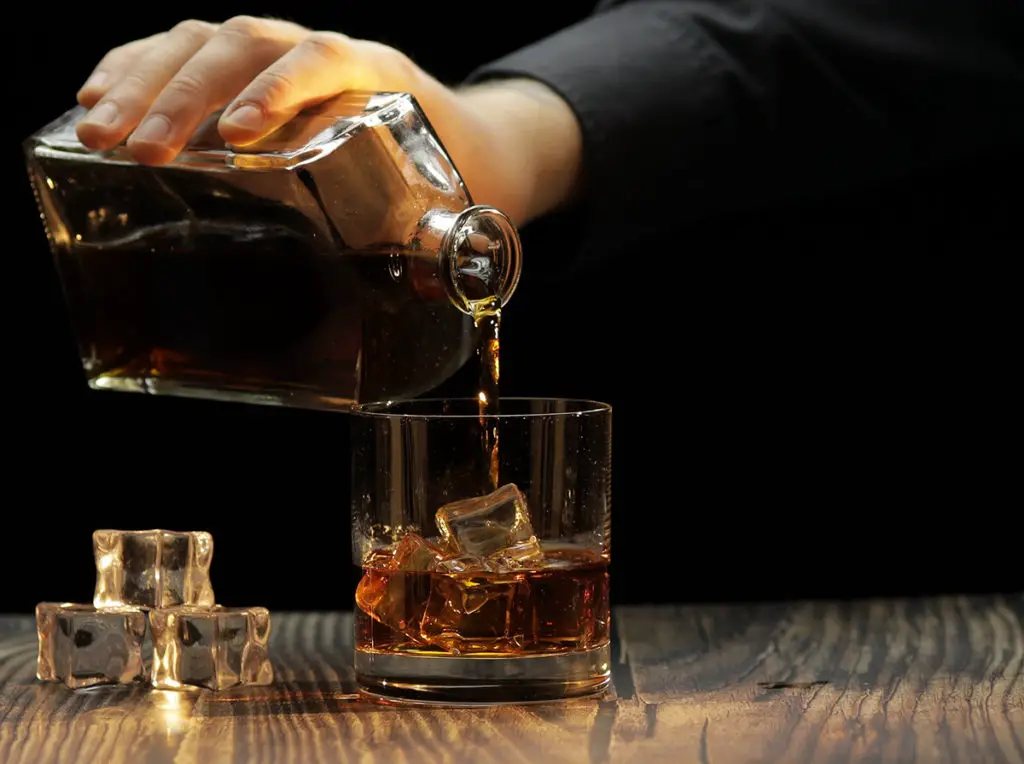Connoisseurs of distilled spirits believe that premium whiskey gets better with age. Whether or not that is true, proper whiskey storage is the key to collecting whiskey and maintaining its taste. So, how do whiskey connoisseurs store their whiskey, and how can you do the same?
Here is how to store whiskey like a true connoisseur:
- Store the whiskey bottle upright.
- Avoid sunlight.
- Store the whiskey at a constant cool temperature.
- Leave the whiskey alone.
- Backfill the bottle with glass marbles.
- Move the whiskey to a smaller bottle.
- Vacuum seal the whiskey bottle.
- Finish the whiskey quickly.
Keep reading as I explain how to store both unopened and opened bottles of whiskey.
1. Store the Whiskey Bottle Upright

Shaker & Spoon - We bring the bar to you! It's the perfect home happy hour🍸→ Get Your Drink Box
I’ll start my storage tips with something controversial: the orientation in which bottles of alcoholic beverages should be stored. Vinos (wine connoisseurs) and many spirits collectors claim that whiskey bottles should be stored on their side or even tipped down a bit to keep the cork moist. And at least in the case of spirits, those connoisseurs appear to be wrong.
While most spirits are sold with either metal or plastic bottle tops, many upscale whiskey bottles are corked like wine bottles. Connoisseurs often state that if the cork is not kept wet, it will dry out and shrink. The shrinking cork increases the amount of oxygen from ambient air, which can leak in and oxidize the hard liquor.
In reality, the higher ethanol content of spirits will dry out the cork, eventually increasing the gas exchange through it. Furthermore, the ethanol will act as a solvent and dissolve some chemicals out of the cork, eventually ruining the spirit’s taste. Upscale whiskeys are aged in oak barrels or casks, not cork.
So store your whiskey bottles standing up to avoid this issue.
2. Avoid Sunlight On Your Whiskey
Limiting sunlight exposure is not just smart medical advice for people of Northern European descent. It is also key to storing whiskey. And for the same reason.
A large part of the energy the Earth’s surface receives from the Sun is in the form of ultraviolet light, between 100 nm and 400 nm (6.2e-13 and 2.3e-10 mi). Photons in this range carry more energy than visible light photons, and on impact with skin or whiskey, impart their energy to whatever they hit. The result is increased chemical reactivity.
This increased reactivity damages DNA in human skin cells and causes the cell to self-destruct, what we call “sunburn.” In whiskey, sunlight causes the ethanol and other chemicals that give the whiskey its flavor to react with oxygen in the bottle. This ruins the flavor and reduces the alcoholic potency of the whiskey.
Ultraviolet light also accelerates the evaporation of ethanol in bottles of whiskey, which can become a problem with open bottles.
3. Store the Whiskey at a Constant Cool Temperature
Whiskey should be stored at stable and relatively cool temperatures to preserve both the flavor of the whiskey and the strength of the bottle.

Temperature fluctuations cause the internal pressure of a sealed bottle to vary slightly. When internal pressure increases, the largely oxygen-depleted air inside the bottle is squeezed out through—and around—the cork. When the internal pressure decreases, fresh air squeezes into the bottle carrying more oxygen.
The pressure changes also cause the bottle to bulge or collapse slightly, which over time causes microscopic cracks to develop in the glass. Eventually, the cracks will weaken the glass enough that the bottle could actually pop.
Wine and spirit bottles are known for exploding on exceptionally hot days if stored in non-climate controlled rooms or cellars.
4. Leave the Whiskey Alone
The easiest thing you can do to preserve the flavor of an open bottle of whiskey is to leave it alone. As long as your storage conditions are adequate (upright, no natural light, and a constant cool temperature), many whiskeys should be fine for weeks or months.
This primarily applies to whiskeys sold with screw-on caps, which provide a better seal than corks.
One thing you shouldn’t do is move the whiskey to a leaded glass whiskey decanter. While okay for most wines, spirits can dissolve lead out of the glass. And if you drink the spirit, the lead ends up in your body.
Sugar of lead, anyone?
5. Backfill the Bottle With Glass Marbles
One trick some upscale connoisseurs use to reduce the amount of oxygen in their open bottles of whiskey is to backfill the bottles with glass marbles every time they pour a drink. That raises the fluid level and reduces the amount of oxygen in the bottle. Glass is usually chemically inert, so the marbles won’t affect the flavor.
Wine connoisseurs and upscale restaurants often use glass marbles for this purpose. Just be sure to thoroughly clean and sterilize the marbles before use. Boiling them in water should kill any microorganisms living on the surface of the marbles.
There is a caveat to using marbles. Many marbles, especially those produced before the 1980s, are made of leaded glass. The leaded glass was used for its superior aesthetic appearance.
If you want to try backfilling your whiskey or wine bottles, you should only use marbles made of food-safe glass. Like many products you didn’t know existed, No products found. are available on Amazon.com for between $2 and $6 per pound.
You can get them in different colors. They’re also multipurpose, so you can also use them for crafts or home decor if you like, too.
6. Move the Whiskey to Smaller Bottles
Another strategy for reducing whiskey’s contact with air in an open bottle is to move the alcohol from its original bottle to a smaller bottle. This can be done as long as the new bottle has a cap that forms an airtight seal.
You want to avoid bottles sold with paper cap liners. Also, avoid plastic bottles unless they are specifically labeled for use with alcoholic spirits.
7. Vacuum Seal the Whiskey Bottle
Oxygen cannot ruin your whiskey if there is no oxygen in the bottle.
One trick used by some wine connoisseurs is to vacuum seal bottles. Removing the oxygen eliminates the risk of oxidation.
It is debated in the whiskey connoisseur community if vacuum sealing is a good idea. Ethanol vapors might degrade rubber stoppers. And the reduced pressure can cause the ethanol to evaporate faster and place additional stress on the bottle.
If you want to try vacuum sealing your whiskey, there is a wide range of accessories and gadgets for the purpose. The small No products found. is available at Amazon and will allow you to remove the air from your open whiskey bottle.
The platform also sells commercial vacuum sealing equipment, like this No products found.. It’s easy to use and allows you to drink or serve the whiskey you want without exposing the bottle’s contents to air.
This device enables you to have several bottles of whiskey, wine, or spirits open at the same time without them going bad.
8. Finish the Whiskey Quickly
The last trick for preserving the flavor of your whiskey is to finish the bottle as quickly as possible. When you get down to a few fingers of whiskey, finish the bottle. Invite a whiskey drinker friend or two over and have a good night.
If the opened bottle doesn’t last long, it’s unlikely that its flavor will shift too much over a short period of time.

Conclusion
The key to storing both unopened and open whiskey bottles is minimizing contact with natural light, oxygen, and temperature fluctuations.
Anything you can do to prevent these types of contact will allow your whiskey collection to maintain its proper flavor for a long long time.
